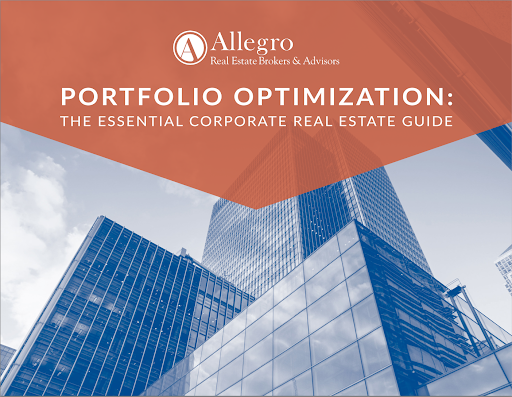After identifying a commercial real estate need, you will likely go through one of two common processes to acquire new CRE: buying or leasing.
Whether you’re seeking access to a new labor market, a better location to reach consumers, or a larger facility to accommodate growth, either acquisition strategy can satisfy your commercial real estate needs.
How do you choose which is right for your organization?
Continue reading for the advantages of each acquisition strategy, and suggestions on how to decide whether buying or leasing commercial real estate is right for your organization.
Advantages of Buying Commercial Real Estate
Before you make a transaction decision, it’s important to understand the benefits of buying and owning commercial real estate.
- Increased organizational value. Properly managed commercial real estate can be a long-term capital investment. It establishes equity, which in turn increases the asset’s value over time.
- Financial control and savings. Fixed loan payments are unlikely to fluctuate. Additionally, organizations have long-term control of an owned space and are not subject to market and landlord risks. Lastly, mortgage costs are, on average, less than lease payments due to cost of funds and amortization periods.
- Investment potential. As a CRE property owner, you have the ability to lease excess space to tenants, generating secondary income for your organization and leveraging depreciation expenses to offset taxes.
Advantages of Leasing Commercial Real Estate
The key difference between buying commercial real estate and leasing commercial real estate is ownership rights. Here are some of the primary advantages of leasing CRE.
- Flexibility. Purchasing real estate has traditionally made the most sense when hold periods are for at least seven to 10 years. For many organizations, this constitutes a long-term commitment that is difficult to plan for. By leasing for shorter periods of three to five years, organizations can maintain flexibility and manage growth more easily.
- Liquidity. Purchasing real estate typically is cash intensive. Down payments are typically 20%-30% of the purchase price. By leasing, occupiers can keep cash on their balance sheet for other needs.
- Minimal maintenance costs. A landlord will often manage the work associated with common area maintenance, mechanical systems, and capital replacements, like a roof or parking lot. This allows you to invest time back into your organization, rather than spending them on property management.
Questions to Consider Before Buying or Leasing Commercial Real Estate
There are a number of factors to consider when deciding whether buying or leasing commercial real estate best fits your needs. Your answers to the following questions may lead you to a decision.
Financial Considerations
- How much cash does my organization have readily available?
- Am I interested in earning more revenue or saving costs for my organization?
Future Growth Considerations
- What are my long-term growth goals for my organization?
- Will I need to make any significant modifications to my next commercial property?
Management Considerations
- Do I have the bandwidth to manage a property and its systems on my own?
- Will I need to involve a third party in the management of my property?
When your organization is ready to fulfill its real estate needs, an Allegro team member can help you determine which transaction is in your best interest, then assist you in carrying out the process.
Want more commercial real estate resources?
Our blog features frequent content, straight from our commercial real estate experts. Subscribe to receive weekly content right in your inbox, on topics like advice and opinions on the state of the industry, market reports, and updates about the Allegro team.







